Destinations
Welcome to Tanzania.
Tanzania, an East African treasure, is celebrated for its awe-inspiring landscapes, diverse wildlife, and rich cultural tapestry. Home to over 60 million people, it is a country where the majestic Mount Kilimanjaro towers as Africa’s highest peak, and the vast Serengeti plains host the world-famous Great Migration. Bordered by Kenya and Uganda to the north, Rwanda, Burundi, and the Democratic Republic of the Congo to the west, and Zambia, Malawi, and Mozambique to the south, Tanzania offers a unique blend of natural wonders and cultural experiences. To the east, the country meets the Indian Ocean, where the idyllic Zanzibar archipelago invites travelers to its pristine beaches and historical charm.
Tanzania’s landscapes are as varied as they are breathtaking, ranging from the lush, green highlands of the Usambara Mountains to the sun-drenched savannas of the Serengeti. The country’s national parks and reserves, such as the Ngorongoro Crater and Selous Game Reserve, are teeming with wildlife, offering unparalleled opportunities for safaris and nature experiences. Beyond its natural beauty, Tanzania is a land of warm and welcoming people, with over 120 ethnic groups contributing to its rich cultural mosaic. Whether exploring the vibrant markets of Dar es Salaam, tracing the ancient trade routes of Stone Town, or experiencing the traditional Maasai way of life, Tanzania offers a journey that is as enriching as it is unforgettable.

Explore our destinations

Serengeti National park
The Serengeti, one of Africa’s most iconic safari destinations, is a vast ecosystem teeming with diverse wildlife and breathtaking landscapes. Spanning over 30,000 square kilometers across northern Tanzania, the Serengeti is home to the world-famous Great Migration, where millions of wildebeest, zebras, and gazelles traverse the plains in search of greener pastures. This spectacle, often accompanied by dramatic river crossings and intense predator-prey interactions, makes the Serengeti a must-visit for nature enthusiasts and photographers alike. The park’s endless golden savannas, dotted with acacia trees and rocky outcrops known as kopjes, provide a stunning backdrop for unforgettable game drives.
Beyond the Great Migration, the Serengeti supports an incredible diversity of wildlife, including the Big Five—lion, leopard, elephant, rhino, and buffalo. Large prides of lions roam freely, cheetahs sprint across the plains, and elusive leopards rest in the trees, while hyenas and wild dogs add to the park’s dynamic ecosystem. The central and northern Serengeti regions are particularly famous for their predator activity, offering excellent opportunities to witness nature’s raw beauty. The park is also home to more than 500 bird species, making it a paradise for bird watchers. Whether exploring the open plains, woodlands, or riverine forests, visitors are treated to an ever-changing wildlife spectacle.
Apart from its wildlife, the Serengeti is steeped in rich history and cultural significance. The region has been inhabited for thousands of years, with the Maasai people coexisting with wildlife in harmony. The Olduvai Gorge, often referred to as the “Cradle of Mankind,” is located within the Serengeti ecosystem and has provided crucial fossil evidence of early human ancestors. Today, visitors can engage with the Maasai communities to learn about their traditions, dance, and way of life. Whether experiencing the dramatic landscapes, witnessing the migration, or immersing in the cultural heritage, the Serengeti offers a safari experience like no other, leaving travelers with lifelong memories of Africa’s untamed wilderness.
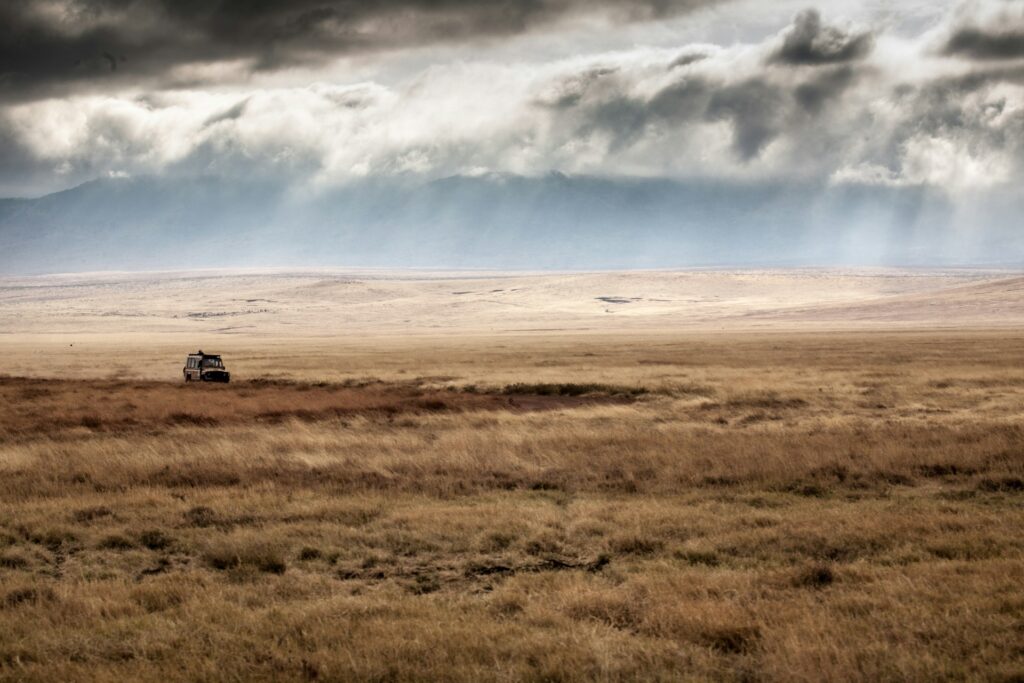
Ngorongoro Conversation Area Authority
The Ngorongoro Conservation Area, a UNESCO World Heritage Site, is one of Africa’s most unique and breathtaking safari destinations. Located in northern Tanzania, it is home to the famous Ngorongoro Crater, the world’s largest intact volcanic caldera. Formed over two million years ago, this natural wonder stretches approximately 20 kilometers in diameter and is a self-sustaining ecosystem teeming with diverse wildlife. Within the crater, lush grasslands, freshwater lakes, and acacia woodlands create an ideal habitat for a wide variety of animals, making it one of the best places in Africa to see wildlife up close in a relatively small area.
The crater is home to an astonishing concentration of wildlife, including the Big Five—lion, leopard, elephant, buffalo, and the critically endangered black rhino. Large prides of lions patrol the grasslands, while hippos wallow in the crater’s central Lake Magadi. The rich ecosystem also supports countless zebras, wildebeest, gazelles, and flamingos, creating a wildlife viewing experience that is unparalleled. With no need for long drives between sightings, visitors can experience incredible game viewing within just a few hours. The surrounding highlands, with their misty forests and dramatic cliffs, provide a stunning contrast to the crater floor, offering panoramic views of this natural masterpiece.
Beyond its remarkable wildlife, Ngorongoro is deeply intertwined with human history and culture. The area is home to the Maasai people, who continue their traditional way of life, herding cattle alongside wild animals. Visitors can engage with Maasai communities to learn about their customs, dances, and ancient traditions. Additionally, the nearby Olduvai Gorge, one of the most important paleoanthropological sites in the world, has provided fossil evidence of some of the earliest human ancestors. Whether marveling at the wildlife, exploring the dramatic landscapes, or delving into the region’s rich history, a visit to Ngorongoro is an unforgettable journey into the heart of Africa’s natural and cultural heritage.
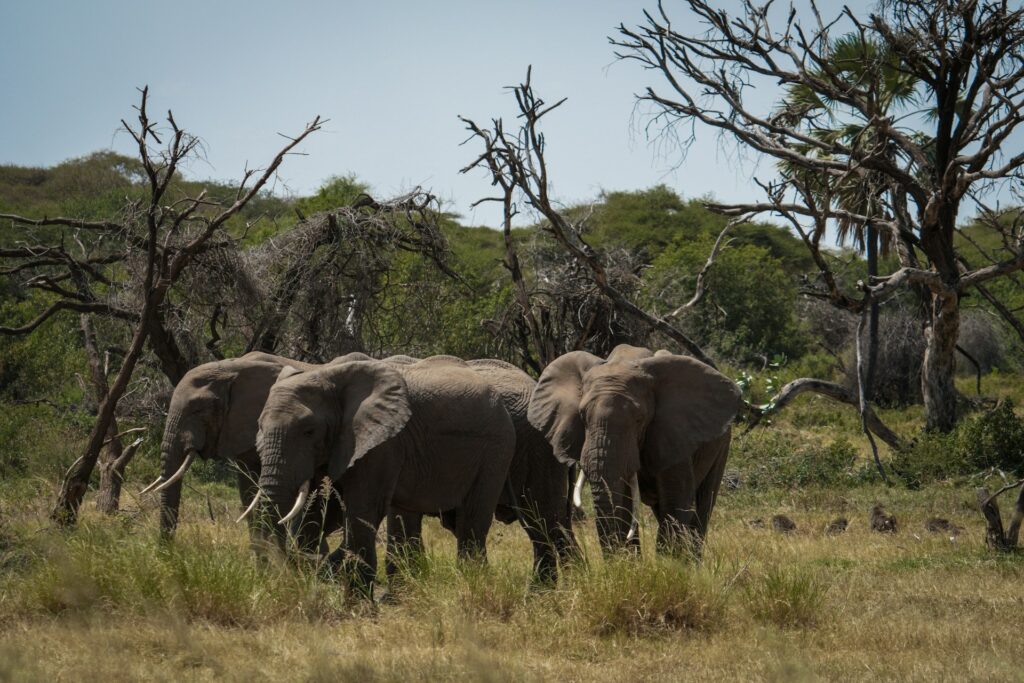
Manyara National Park
Lake Manyara National Park, a hidden gem in northern Tanzania, is a diverse and scenic safari destination renowned for its breathtaking landscapes and rich wildlife. Nestled at the base of the Great Rift Valley escarpment, the park is dominated by its namesake, Lake Manyara, a shallow alkaline lake that covers a significant portion of the park during the wet season. This lush ecosystem provides a striking contrast to the surrounding dry woodlands and open savannahs, creating a haven for a variety of animals. With its compact size and diverse habitats, Lake Manyara offers an intimate safari experience, perfect for both first-time visitors and seasoned travelers.
One of the park’s most famous attractions is its tree-climbing lions, a rare phenomenon seen in only a few places in Africa. These majestic predators can often be spotted resting on the branches of acacia trees, escaping the heat of the midday sun. Additionally, the park is home to large elephant herds, playful troops of baboons, giraffes, zebras, and an abundance of birdlife. The lake itself is a sanctuary for thousands of flamingos, pelicans, and other waterbirds, creating a mesmerizing pink-hued spectacle during migration seasons. Hippos and crocodiles can also be found along the shoreline, adding to the park’s incredible biodiversity.
Beyond its wildlife, Lake Manyara National Park offers remarkable scenic beauty. The groundwater forest, filled with ancient mahogany and fig trees, provides a cool and shady retreat, while the open plains and volcanic hot springs add to the park’s unique topography. Visitors can enjoy game drives, canoeing (when water levels permit), and even night safaris for a chance to witness nocturnal animals in action. With its stunning landscapes, diverse wildlife, and opportunities for adventure, Lake Manyara National Park is a must-visit destination for those seeking a truly immersive Tanzanian safari experience.
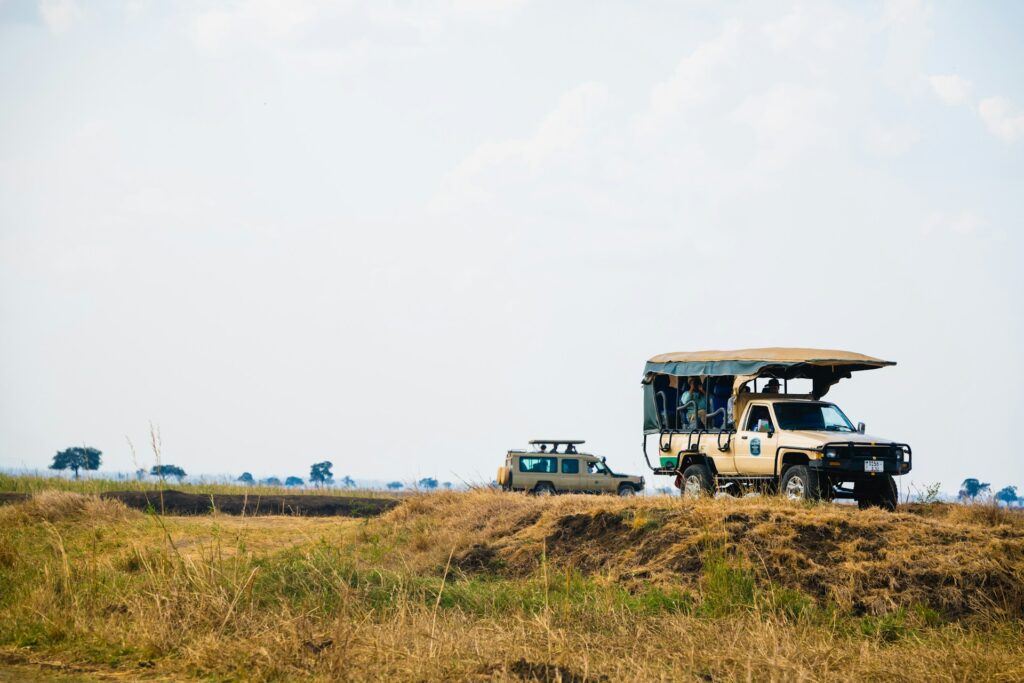
Mikumi National Park
Mikumi National Park, often referred to as the “Little Serengeti” of southern Tanzania, is one of the most accessible and rewarding safari destinations in the country. Located along the Dar es Salaam–Zambia highway, it serves as a gateway to the vast wilderness of the Selous Game Reserve and Ruaha National Park. The park is characterized by its open savannahs, rolling grasslands, and scattered acacia woodlands, which provide a picturesque backdrop for wildlife viewing. With its diverse habitats and ease of access, Mikumi offers an excellent safari experience, making it an ideal choice for both short and extended visits.
The park is home to a rich variety of wildlife, including large herds of elephants, zebras, giraffes, and buffalo. Lions are commonly sighted in the Mkata floodplain, sometimes even lounging on the dirt roads, while leopards, hyenas, and wild dogs add to the predator presence. One of Mikumi’s highlights is its population of rare elands—the largest antelope species—along with abundant wildebeests, impalas, and hippos, which can be found in the park’s numerous waterholes. Birdwatchers will also be delighted, as Mikumi boasts over 400 bird species, from vibrant lilac-breasted rollers to majestic fish eagles.
Beyond its incredible wildlife, Mikumi National Park offers a unique blend of adventure and relaxation. Visitors can embark on thrilling game drives, explore the nearby Uluguru Mountains, or visit the adjacent Udzungwa Mountains for a hiking experience to breathtaking waterfalls. The park’s proximity to Dar es Salaam makes it an excellent option for a quick safari getaway, while its connection to southern Tanzania’s vast wilderness areas makes it a key part of a more extensive safari circuit. Whether for a short escape or a longer adventure, Mikumi delivers an unforgettable African safari experience.
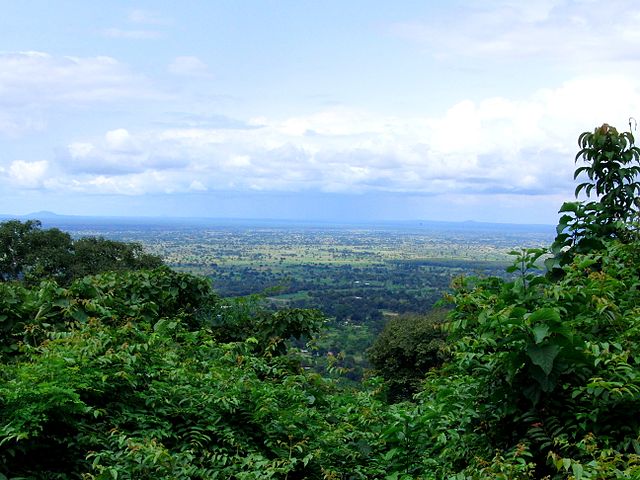
Udzungwa National Park
Udzungwa Mountains National Park, located in the southeastern part of Tanzania, is a stunning and lesser-known gem that offers a unique blend of biodiversity, stunning landscapes, and adventurous hiking opportunities. The park is part of the Eastern Arc Mountains, a biodiversity hotspot that is home to a rich variety of endemic plant and animal species. Its lush forests, dramatic mountain ridges, and cascading waterfalls create an awe-inspiring backdrop, making Udzungwa a must-visit destination for nature lovers and trekkers seeking a more off-the-beaten-path experience.
Udzungwa is famous for its rich biodiversity, including several species found nowhere else in the world. Among the park’s highlights are the endangered Sanje mangabey and the Udzungwa red colobus monkeys, both of which can be spotted on guided treks through the forest. The park is also home to a wide variety of birds, making it a paradise for birdwatchers, with species such as the endemic Udzungwa partridge and the rare African crowned eagle. Other wildlife includes elephants, buffalo, leopards, and various antelope species. The park’s pristine forests and diverse ecosystems offer an unforgettable opportunity to explore Tanzania’s hidden natural treasures.
The park offers a range of hiking trails, varying in difficulty and length, that lead visitors through breathtaking landscapes, past crystal-clear streams, and to stunning viewpoints and waterfalls. The most famous trek is the hike to the 170-meter-high Sanje Waterfall, where visitors are rewarded with a refreshing swim and panoramic views of the surrounding mountains and forests. With its combination of rich wildlife, spectacular scenery, and challenging hiking routes, Udzungwa Mountains National Park provides a truly immersive and rewarding experience for those looking to explore Tanzania’s natural beauty beyond the typical safari routes.
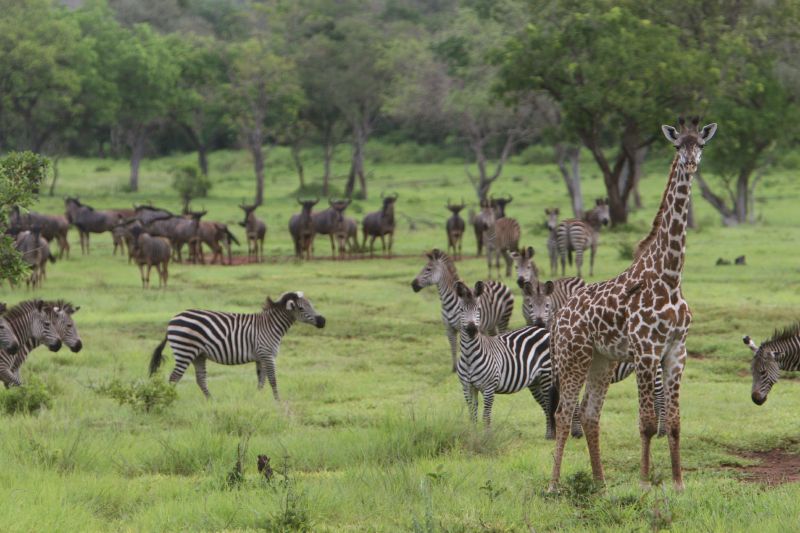
Nyerere National Park
Nyerere National Park, formerly known as the Selous Game Reserve, is one of Tanzania’s largest and most pristine wilderness areas, covering over 30,000 square kilometers of diverse ecosystems. Located in the southern part of the country, the park is named after Julius Nyerere, Tanzania’s first president, in honor of his contributions to conservation and the environment. Nyerere National Park is known for its remote and untouched landscapes, including savannahs, woodlands, wetlands, and the mighty Rufiji River, which flows through the park, providing vital water sources for its abundant wildlife. As a UNESCO World Heritage Site, the park is considered one of the last true wilderness areas in Africa, offering an authentic and unspoiled safari experience.
The park is home to an incredible variety of wildlife, including large populations of elephants, lions, hippos, and crocodiles. It is also renowned for its vast herds of buffalo and wildebeest, and visitors can often spot giraffes, zebras, and numerous antelope species across the park’s plains. The Rufiji River and its associated wetlands are critical habitats for many birds, making Nyerere a paradise for birdwatchers, with over 400 species recorded in the park. It is one of the few places where visitors can experience an intimate encounter with wildlife, thanks to the park’s low tourist numbers and vast, untouched wilderness areas. The combination of open plains, dense forests, and waterways offers a diverse and dynamic safari experience.
Nyerere National Park is a haven for those seeking a more off-the-beaten-path adventure, far removed from the crowds of more famous Tanzanian parks. The park offers game drives, boat safaris on the Rufiji River, and walking safaris, giving visitors the chance to explore the wilderness in different ways. The Rufiji River safaris, in particular, provide a unique perspective of the park, allowing for sightings of hippos, crocodiles, and various bird species. With its rich biodiversity, remote location, and range of activities, Nyerere National Park offers an unparalleled safari experience for those looking to immerse themselves in Africa’s natural beauty away from the crowds.
Need help? Our team is just a message away